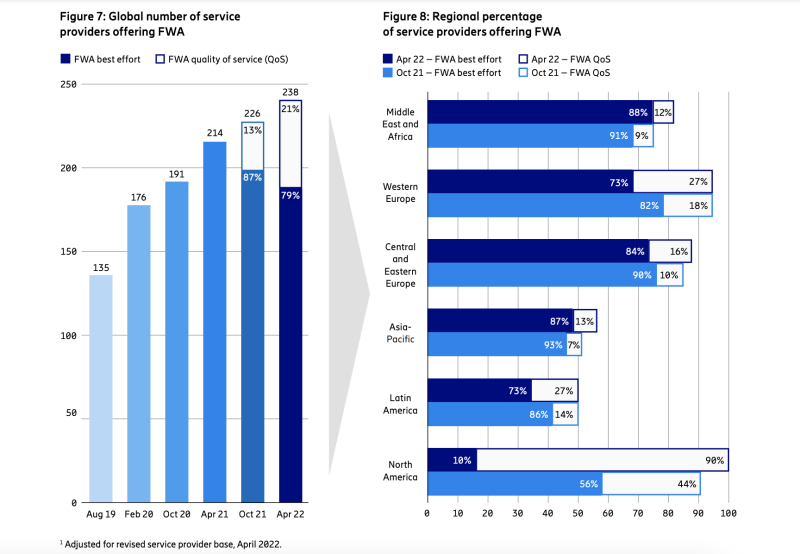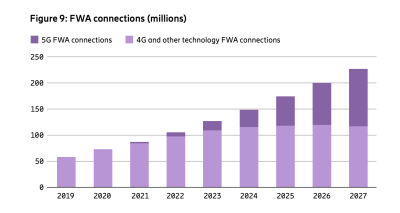Fixed wireless access (FWA) has become very popular, not just in the United States, but around the world, according to Ericsson’s newest Mobility Report published this week.
Out of 311 service providers studied in more than 100 countries, 238 had an FWA retail offering. This represented an average of 77% globally, which is up from 72% a year ago.
Ericsson found that service providers’ adoption of FWA offerings has more than doubled in the last three years.
The report defines FWA as a connection that provides primary broadband access through mobile network-enabled customer premises equipment (CPE). This includes various form factors of CPE, such as indoor (desktop and window) and outdoor (rooftop and wall-mounted).
5G is also becoming a big factor in fixed wireless. During the last six months, the number of service providers offering 5G FWA has increased from 57 to 75, representing growth of around 30%. There is growth across all regions, with the strongest increase in North America, where 60% of all service providers surveyed now offer 5G FWA.
Speed-based pricing plans on the rise
The survey found that 79% of FWA offerings are sold on a GB-per-month basis, which Ericsson calls “best effort.” While about 20% of service providers offer speed-based tariff plans, which Ericsson refers to “QoS.” This is a significant increase in QoS plans, which rose from 13% in October 2021.

“Speed-based tariff plans are commonly offered for fixed broadband services such as those delivered over fiber or cable,” said the report. “These types of plans are well understood by consumers, enabling the service providers to fully monetize FWA as a broadband alternative.”
Service providers with 5G FWA are more likely to have QoS FWA with speed-based offerings, with 26 out of 75 utilizing this approach (35%). Speed-based offerings are growing across all regions, with the North America region showing the highest adoption, with 90% of all offerings being speed based.
FWA popularity is global
More than 80% of service providers in North America, Europe and the Middle East and Africa regions are offering FWA. In Latin America and Asia-Pacific, more than 50% of service providers are offering FWA.

While some service providers and regulatory bodies are starting to report FWA connections, globally there is still limited reporting.
Based on Ericsson’s own research, it estimates there were close to 90 million FWA connections by the end of 2021, and during 2022 that figure will exceed 100 million.
This number is forecast to more than double by 2027, reaching almost 230 million. This figure represents 15% of fixed broadband connections.

